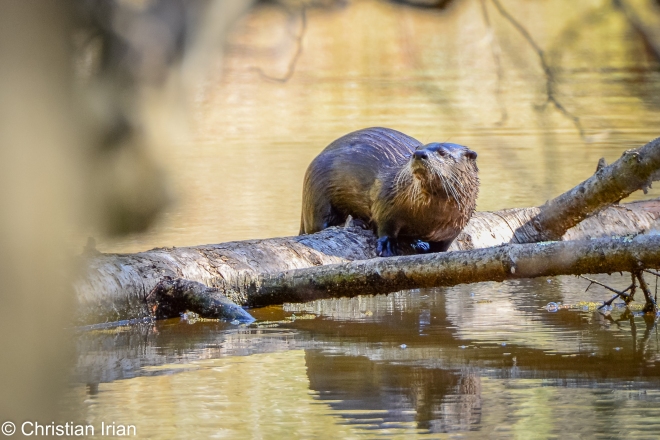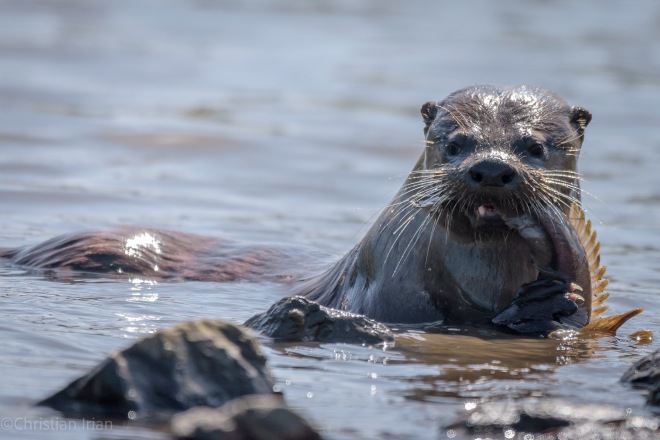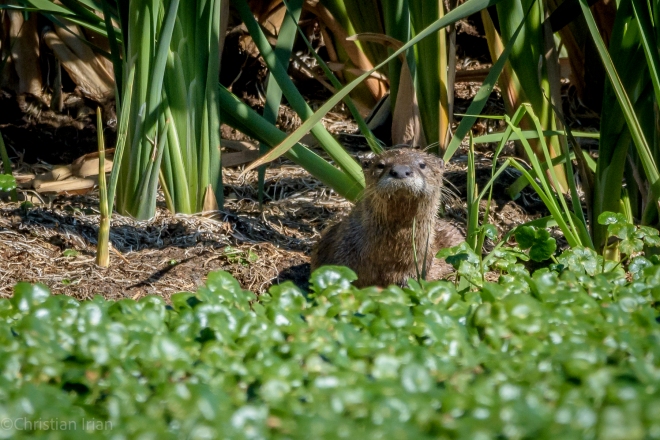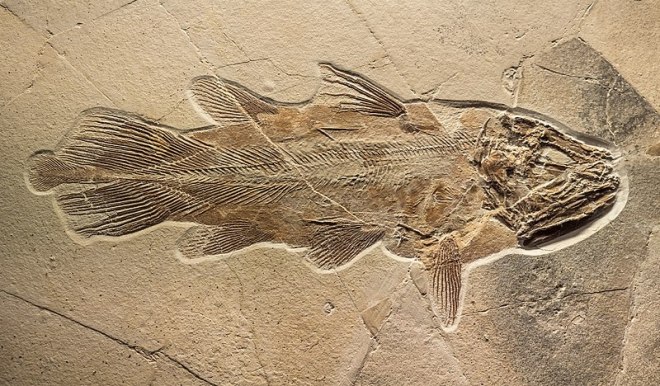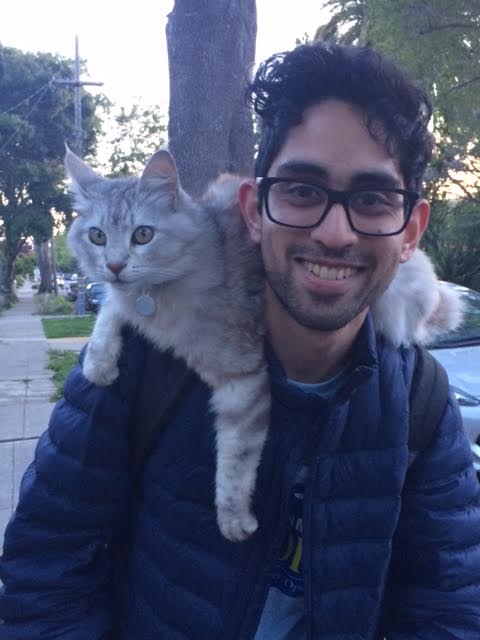A TRIP TO THE LAKE
It was February 2016. Tilden Park in Berkeley, 9 in the morning. The sun and its heat were suggestions behind a thick blanket of light grey fog; I shivered beneath my double-layered jackets as I walked the rain-soaked trail, past sluggish rivers lined with thickets of trees.
I was an undergraduate at UC Berkeley, trekking the park with my Vertebrate Zoology class. Our enthusiasm for seeking out and jotting notes on local bird and amphibian species aside, the cold weather had left us all a little demoralized.
But that changed when a few members of our pack shouted out with excitement: they had seen a lithe, furry shape darting along one of the paths. It was a river otter, Lontra canadensis, in transit between Jewel Lake and another body of water within the park. Many of us scrambled to get a better view of the dashing mammal, but it moved quickly before jumping in the water, dropping from sight.
Even the professors leading us found the sighting noteworthy, and with good reason. River otters had once thrived in the lakes and rivers of the Bay Area, as they had in freshwater ecosystems across North America. But centuries of human interference, in the forms of fur-trapping, environmental degradation, and habitat loss, had forced them to fall back. That bleak picture has started to change just within the past decade, with individual otter sightings in parks around the Bay still attracting media attention and piquing the interest of local biologists.
Natures was restoring itself. The otters were coming back to northern California, and no doubt with the aid and careful guiding hand of some dedicated scientists. They would join Yosemite park’s grey wolves as another success story of reintroduction.
At least, that’s what I thought.
THE BIG PICTURE
The North American river otter has an almost unprecedented range. Historical evidence suggests it lived from coast to coast throughout Canada and much of the US. They’re vivacious creatures, possessing strong swimming skills complemented by surprising competence on land, with a wide-ranging diet that spans fish to crustaceans to small birds.
But these stellar qualities couldn’t save them from the introduction of humans. Their sheer usefulness to humans, particularly its pelt, led to extensive hunting by indigenous groups, a trend that continued with European trappers and their hunting dogs.
On top of these otter-specific challenges, the creatures suffered alongside their ecosystems through the hardships of habitat degradation and industrialization. Bay Area-based otters were no exception to this; the Gold Rush flooded local rivers with mercury-tainted sediment in the mid-1800s, and garbage and toxic waste went directly into the Bay until the 1960s.
By the second half of the 20th century, Americans began work to rectify the otter displacement. Across the continental US, 21 states and one national park launched programs to reintroduce river otters to their previous habitats. In total, over 4000 otters were deliberately released in former otter territory over 22 years. These projects were mostly successes; by 1998, every state except New Mexico reported otters occupying at least some of their historic habitat.
It speaks to a rousing success story. But unexpectedly, the Bay Area bucked this trend. Here, the only official action focused on otters was a 1961 protection order from California Fish and Game, giving them legal protection from hunting and trapping.
“You know, you should be careful calling it a reintroduction.”
It was April 2018. I sat in UC Berkeley’s Valley Life Sciences Building, in Alan Shabel’s office. Shabel is a professor in Berkeley’s Integrative Biology department, an evolutionary biologist with an extensive knowledge of mammals, and he was one of my professors for vertebrate zoology two years previously. He’s been teaching that class since 2009, and his yearly field trips into the wilds of the Bay Area have given a picture of the ecosystems changing over time.
More than that, otters are one of Shabel’s specialties. In 2017 he studied otters in Lake Victoria, observing the two species that call that lake home, and next year he plans to visit Africa again to officially determine if a subspecies of otter is in fact its own unique species.
For a second I’m embarrassed. It’s the umpteenth time in the interview I’ve referred to the river otters’ reappearance in the Bay as a “reintroduction”—and Shabel cautions me on that word choice. That’s because the picture he’s painting for me about the river otter’s resurgence colors outside the lines of the tidy image I’d been led to imagine.
“The first instance of a river otter being spotted in the East Bay was an IB 104 student,” Shabel tells me, referring to the vertebrate zoology class. “He was out in the open grass areas in the hills of Briones [Regional Park], and who runs over the hill but a river otter?”
This sighting took place in 2012, and it was one of two otter sightings that year. The other one took place across the Bay, in San Francisco’s Sutro Baths. Unlike Briones’s unsung hill-climber, this otter received press coverage, earning the nickname Sutro Sam.
Though they only stayed in their respective areas for a few months before departing, these two otters were first spotted in the Bay Area in living memory, and they lit the local biology and conservation community on fire. Citizen scientists began blogs, and eyewitness tips of otter sightings began to roll in. One such blog, the River Otter Ecology Project, would over 2,300 river otter sightings in the Bay between 2012 and 2017, in every Bay Area county except San Mateo.
Species reintroduction. It’s a phrase in vogue in environmental circles. It speaks to a redemptive arc in human-environmental relations: the restoring of species to their natural habitats. A righting of wrongs.
But some situations are not so clear. The increasing prevalence of the river otter in the Bay Area—once an incremental seasonal increase, now the steady formation of a year-round presence—speaks less to a human-led reintroduction effort and more to a phenomenon humans have yet to fully understand.
“It’s less of a reintroduction,” Shabel says, “and more of an invasion.”
——————————————————————————————————-
California got in on this save-the-otters action, with California Fish and Game outlawed the trapping and hunting of otters in 1961. But the furry creatures largely benefited from general programs to improve the Bay, such as the newly founded Bay Conservation and Development Commission’s efforts to end direct trash dumping into the waters, instead of efforts to specifically preserve otters.
Even coincidental changes in human lifestyles stood to benefit the otters. As Shabel wryly notes, “Even dogs are different… Dogs were used for hunting and they were allowed to roam widely… now dogs aren’t as menacing, and otters can even kill dogs sometimes!”
The otter resurgence is no small feat. Industrialization and expanded human presence flooded otter homelands with organic pollutants such as pesticides and industrial runoff; these chemicals are eaten by decomposing microbes and eventually travel up the food chain, where they concentrate in the bodies of predators like the river otter.
So what role does the returning otter have to play in its old stomping grounds? Shabel says that, while the data aren’t in on river otters being a keystone species, the resurgence is having some notable effects.
Shabel specifically mentions the otters’ voracious appetite as both a good and bad influence on their environments. The good versus bad often comes down to what the otters choose to eat—good if it’s an invasive turtle species that’s putting pressure on native turtles, bad if it’s a Sacramento perch, an endangered fish endemic to Northern California waters.
Where many species would have difficulty resettling an old home, otters seem poised to thrive. Otters that used to inhabit the Bay for a few months each year are now starting to persist year-round. Shabel specifically mentions a female arriving in Tilden in 2017, pregnant with pups; when those pups were born, they persisted in the same place for most of the year. He expects these numbers to only increase from here on out.
That cold morning in Tilden, seeing the otter invigorated us to keep up with the field trip. And whatever benefits or harmful consequences the return of river otters to the Bay Area has for the local environment, that spur of interest and enthusiasm for our local parks and wilderness cannot be underestimated. Some good may come from this otter invasion yet.
All otter photos taken in local Bay Area parks by Christian Irian.
